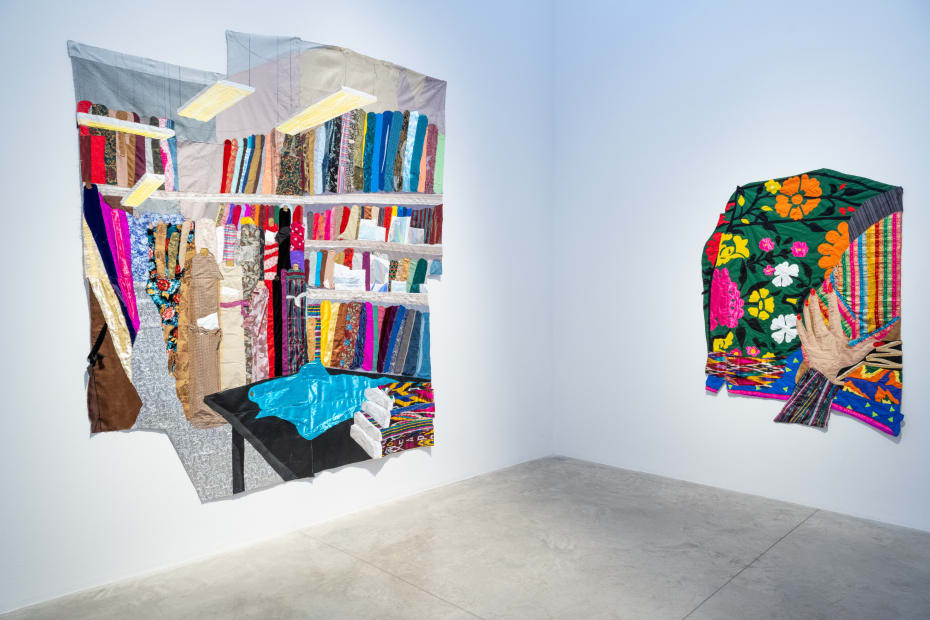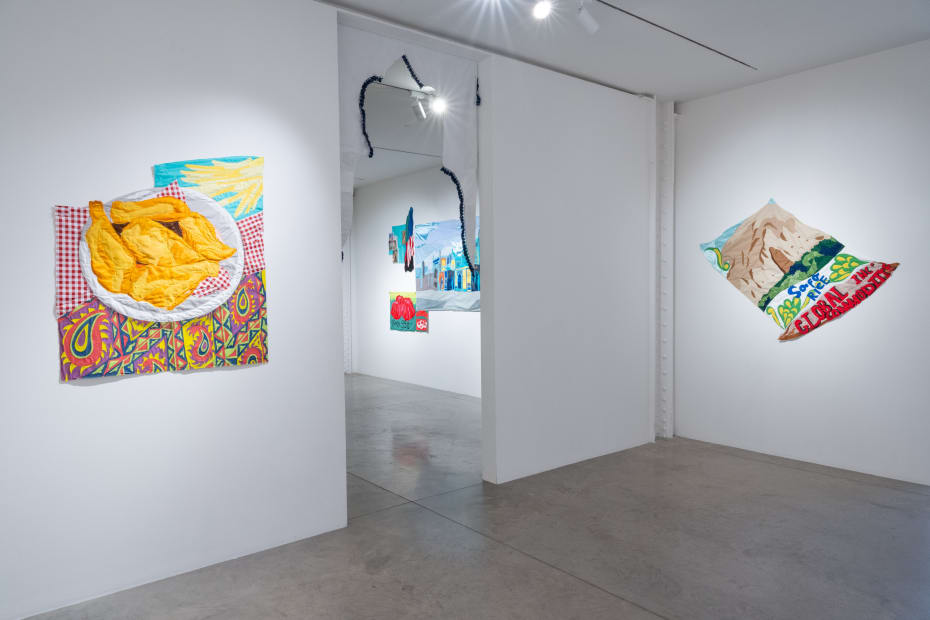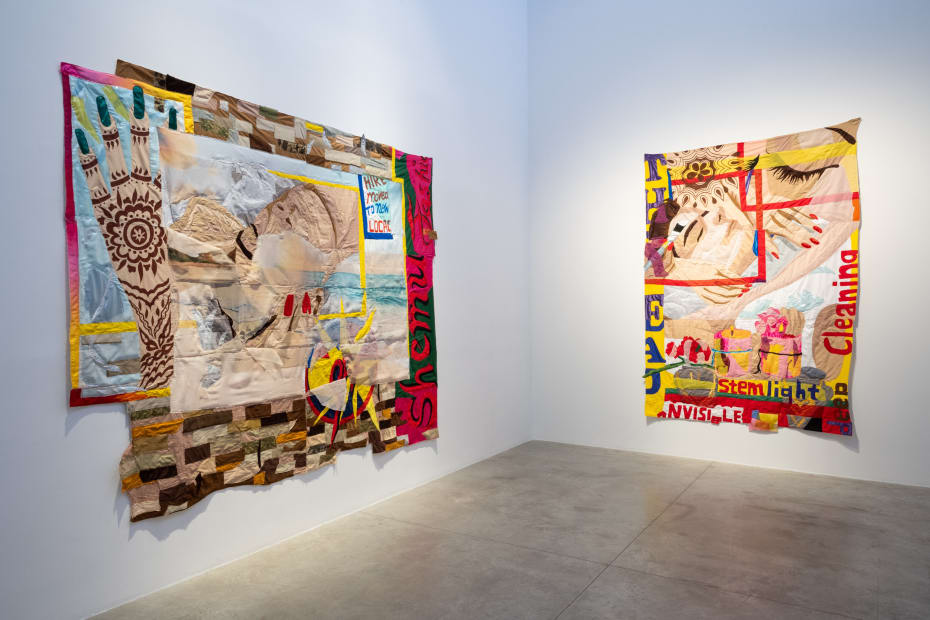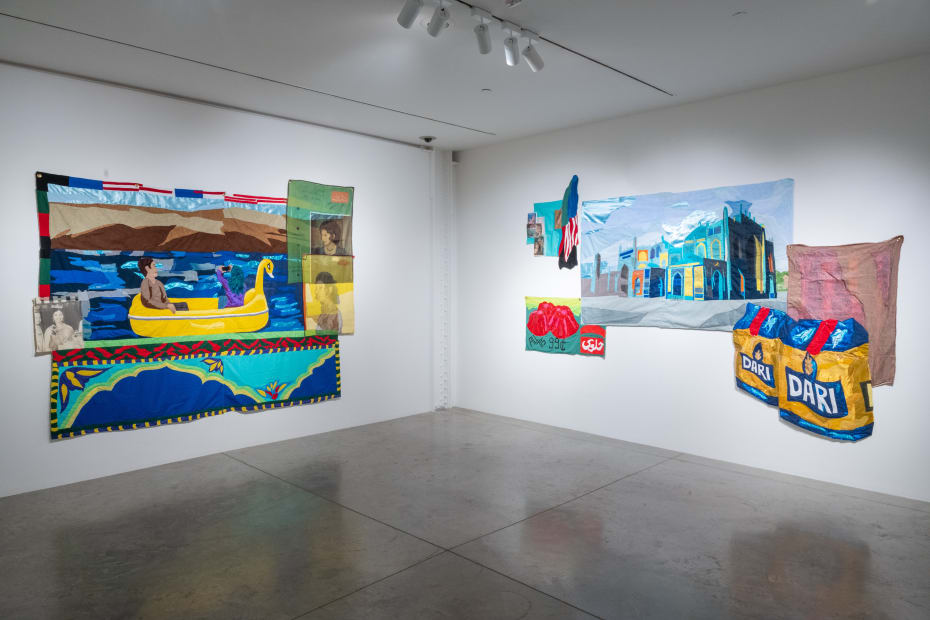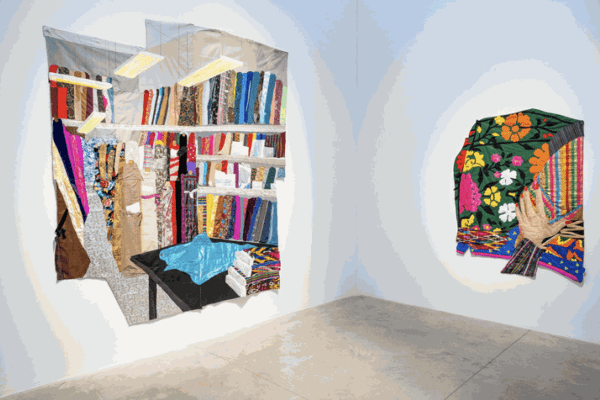Hangama Amiri: Wandering Amidst the Colors
My conception of home was no longer a single place, but a feeling, since the memories I had of Afghanistan were now blurry and transient.
Wandering Amidst the Colors, Hangama Amiri’s first solo show in New York, draws viewers into her search for home. On view from April 1 through May 1, 2021, Wandering Amidst the Colors comprises an immersive, autobiographical body of work developed over the course of the past year, emerging from Amiri’s explorations of Afghan immigrant communities throughout New York City.
Splicing and layering myriad fabrics and hand-painted elements into street scenes and interiors, the artist evokes the fragmented nature of memory and hybridizing influence of globalization. The layout of the exhibition traces the artist’s journey through various neighborhoods that anchored her to her youth in Central and South Asia: the Kouchi Supermarket in Flushing, Queens, the beauty salons, shops, and restaurants full of Afghan, Nepalese, Indian, and Pakistani food in Jackson Heights, and an Afghan-owned fabric shop in Chelsea.
In Gulzar, Beauty Salon, Amiri creates a massive interior space that is devoid of figures but loaded with objects and symbols that reflect the backgrounds of the owners and patrons - such as Bollywood glamour shots and advertisements for treatments in Spanish and Pashto. Amiri creates for viewers “a sensorial experience that recalls my feelings of belonging, familiarity, and nostalgia while they are within the artwork.” At the same time, Amiri addresses the “privileged position of the artists when it comes to the politics of representation.” The omission of the figures in the interior scenes is both a way of allowing the viewer to occupy space, as well as manner of conveying privacy and respect for its regular inhabitants.
In other works, such as Rupture and Repair, Amiri introduces fragments of the human form, interspersed with text and abstract patterning. The piece references beauty advertisements seen outside the shops in Jackson Heights, which feature predominantly Caucasian models despite the majority of their staff and clientele being nonwhite. Here, the artist has “flipped the story…the images that I’ve witnessed in these stores depicted white bodies, the Western body, getting treated. I’ve made these figures brown, it’s their time to be treated, to be healed, to be taken care of.”

